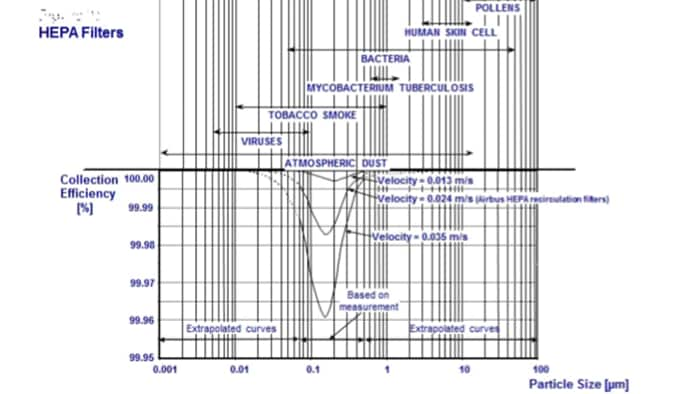AIRCRAFT VENTILATION AND KEEPING CABIN AIR CLEAN
Have you got concerns about flying due to the COVID–19 pandemic? The good news is that thanks to efficient air ventilation and filtering, aeroplanes are an unlikely place to catch viruses.
HEPA FILTERS ON AIRBUS AND EMBRAER AIRCRAFT REMOVE 99.79% OF BACTERIA AND VIRUSES
Finnair’s fleet consists of Airbus (used in long-haul traffic and in European traffic), Embraer (used on European routes) and ATR aircraft (used in domestic and regional traffic).
Airbus and Embraer aircraft use mostly fresh air, drawn from outside of the plane and sterilized by high temperatures in the pneumatic and air conditioning systems. The air that customers and crew breathe in the cabin is circulated using High-Efficiency-Particulate Arrestors (HEPA) filters, which remove bacteria and viruses, including MERS and COVID–19 with an efficiency of 99.97%. HEPA filters on Finnair’s Airbus and Embraer aeroplanes offer similar performance to those used to keep the air clean in hospital operating theatres.
Source: Airbus
“One important characteristic of ventilation in an aircraft is that the fresh air is supplied from overhead stowage compartment level and extracted at floor level, which means that there is no air flow forward or rearward along the cabin”, says Marko Anttila. “That also helps to reduce the possibility of spreading viruses.”
HEPA filters are changed and disposed of according to manufacturer instructions.
EFFECTIVE VENTILATION IN ATR TURBOPROP AIRCRAFT
Smaller ATR turboprop aircraft, which are used on Finnair’s shorter regional flights, are not equipped with HEPA filters. However, the ventilation system is otherwise similar to other aircraft types: fresh air is supplied from the overhead stowage compartment level and extracted at floor level.
Partially recirculating air is a crucial element in keeping the cabin temperature and pressurisation optimal. Without recirculation, it’s not possible to effectively control the temperature in the cabin, while fuel burn and emissions increase too.
However, should someone on board present any symptoms of COVID-19, the procedure set in place by the aircraft manufacturer calls for closing of recirculation systems. When this measure is taken, all cabin air will be substituted by fresh air only. Our crews are familiarized and trained with this procedure to ensure everyone on board remains safe.
Overall, a passenger’s risk of in-flight transmission of SARS-CoV-2 is likely to be low or extremely low.
You can read more about the risk of contracting COVID-19 in an aircraft in this interview with Finnair’s Medical Director Kimmo Ketola. To ensure that everyone feels safe and secure when flying, we have introduced additional measures, including new Clean Kits and the mandatory use of face coverings, with more details on what to expect when flying with Finnair here. Our customers’ health and safety is our number one priority.



